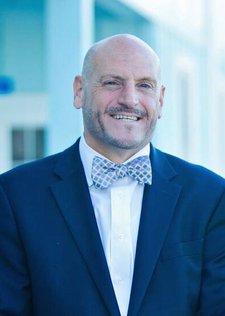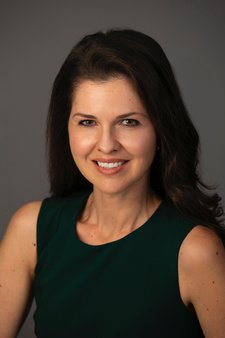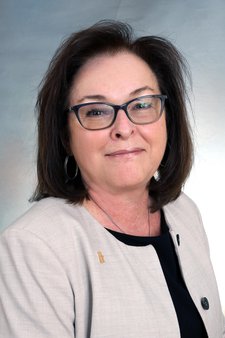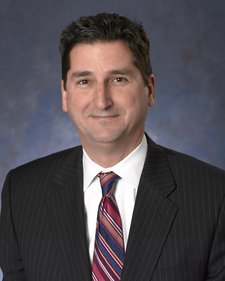
By Claire Ballentine
April 6, 2023
There’s no doubt about it: The shift from the pandemic economy to whatever comes next has been frustrating and confusing. Inflation’s back in the US for the first time in a generation. The federal government has had to step in to guarantee depositors at a pair of banks. Markets are up this year, but your retirement account is likely still recovering from the shellacking it took in 2022—not just on stocks, but on bonds, too. Mortgage rates have shot up to ... wait, how much?! Maybe you’ve thought about quitting your job for a better one—unemployment is still near historic lows—but then you heard about all these layoffs. You’d like a new car, but prices are still nuts. In a time when everything seems more up in the air than usual, we asked financial experts to help us untangle the knottiest money problems, from investing to career planning to smarter spending.

Illustration: Anna Haifisch for Bloomberg Businessweek
● So I should be putting my cash under a mattress right now, right?
The sudden failures of Silicon Valley Bank and Signature Bank in March were scary, but for the vast majority of US bank depositors, there’s no need to worry about your dough. The Federal Deposit Insurance Corp. covers $250,000 per depositor in qualified accounts at insured banks. If you somehow find yourself with more than that, diversifying among multiple banks might be a good idea, says Peter Palion, founder of Master Plan Advisory. You can also be strategic about who’s listed as the depositor on your accounts because the FDIC covers each co-owner of a joint account. (Fun deposit insurance fact: Married couples can get $1 million of FDIC coverage at one institution just by having a personal bank account in one spouse’s name, a personal bank account in the other spouse’s name and a joint account.)
But most traditional bank accounts offer little to nothing in interest. If you want to do better, you can get about 3.75% in FDIC-insured high-yield savings accounts. Insured certificates of deposit are paying around 4.5% if you’re willing to lock up your cash for 12 months. Series I savings bonds from the US government (available at treasurydirect.gov) adjust their yield with inflation and currently have a 6.89% interest rate. Finally, many money-market mutual funds are also paying more than 4% now—but remember that while these funds invest in short-term instruments and should be low risk, they’re not FDIC-insured.
● What’s the deal with bonds now?
They have a reputation for safety, but bonds became surprisingly volatile in 2022 as the key federal funds rate turned up sharply from near zero. (Bond prices fall when interest rates rise.) At the same time, the S&P 500 stock index lost about 18%—meaning that a classic diversified portfolio of 60% stocks and 40% bonds would have lost about 16%. So it didn’t feel like bonds offered much protection. But giving up on asset-class diversification now would be a mistake, experts say. Because they offer a steady stream of income and repayment at maturity, bonds generally provide a smoother ride than stocks in turbulent markets. And because the Federal Reserve has hiked rates quickly, money managers including BlackRock, AQR Capital Management and DoubleLine are expecting increases to level off and bonds to rebound. (The Vanguard bond index fund has returned 3% this year.) If you’re still anxious about volatility, consider moving some assets—particularly money that you might need within a couple of years—into bonds or bond funds with shorter maturities, which are generally less risky.
● Are stocks cheap?
Despite a bit of a rally this year, the S&P 500 has lost almost 13% since the start of 2022. But the mere fact that stocks have fallen doesn’t necessarily mean they’re a bargain yet. During a decade of low interest rates, investors frustrated with paltry yields on bonds piled into stocks looking for better returns. Equity valuations surged, and they’re still high by many measures. For example, Bloomberg Opinion columnist John Authers recently pointed to share prices as a multiple of companies’ sales. With a price-to-sales ratio of more than 2, the S&P 500 is still as expensive as it was at the peak of the dot-com bubble in 2000. Other measures tell a similar story. Max Gokhman, head of MosaiQ Investment Strategy at Franklin Templeton Investment Solutions, likes to look instead at prices relative to “book” value, or the value of a company’s assets. “It’s much harder to gussy up book value with creative accounting,” he says. Right now stocks on the S&P 500 trade at about four times book value, down from five at the end of 2021, but above where the metric was for most of the past 20 years.
This doesn’t mean stocks won’t make money from here, just that the return you should expect is probably lower than the gains investors got used to in the bullish decade leading up to 2022. The good news—particularly for younger savers—is that you don’t have to nail the timing, which is difficult to do anyway. If you’re investing a set portion of your paycheck every month, you have some math on your side helping you to take advantage of falling prices: You automatically end up buying more shares when prices are low, and fewer when they are high. “In volatile markets, this really helps you,” says Burton Malkiel, emeritus professor of economics at Princeton University.
● What’s all this I hear about a recession?
The chatter has certainly gotten louder since those banks got into trouble. Although their collapse hasn’t set off a broader financial contagion, the strain they fell under was a sign that the Fed’s tighter policy is starting to bite in the real economy. Goldman Sachs recently increased its estimate of the odds of a US recession in the next 12 months to 35%, up from 25%. Meanwhile, the median estimate of economists surveyed by Bloomberg News is 65%. Right now the economy is stable: US employers added more than 300,000 jobs in February, and the unemployment rate is only 3.6%. But analysts such as Matt Maley, chief market strategist at Miller Tabak + Co., worry the banking crisis could cause banks to tighten their standards, leading to less credit availability and slower economic growth.
● How big an emergency fund should I have in case I lose my job?
The standard rule of thumb among financial planners is three-to-six months’ worth of living expenses in cash or a cash-like instrument such as a high-yield savings account or a certificate of deposit. Some financial advisers are now recommending stashing away even more, given the heightened risk of a recession that could prolong job searches. OK, look, this is a stretch goal for most people—planners tend to work with affluent (and older) clients, while surveys show large numbers of Americans would struggle to meet a surprise $1,000 expense from savings. But every bit you can add takes pressure off and you don’t need to get there right away. Younger people might not need to have as much in savings, because they typically have more flexibility and lower target salaries when looking for a new job.
● Is college still worth the cost? And how do I save for it?
In 1970 it cost about $10,000 a year, adjusted for inflation, to attend a public four-year school (including tuition and room and board) and about $20,000 a year for a four-year private school. For the 2022-23 academic year, those figures are $20,500 and $52,590, respectively. So it makes sense that many young people are eyeing college more carefully than previous generations. Bear in mind that the true price of college after grants—particularly for low-income students admitted to selective schools—may be far lower than the sticker price. (When considering aid, pay attention to how much comes from grants, which don’t have to be repaid, versus loans.) The wage premium for college graduates is still high: The median recent graduate with a bachelor’s degree earns about $18,000 more a year than a peer with only a high school diploma, according to an analysis by the New York Fed.
Crucially, though, students have to finish that degree, and even then the Fed researchers found that about 25% don’t make more than the typical high school grad. If there’s uncertainty about going, local public or community colleges can be good options to earn credits without piling on huge debt.
For parents trying to plan for their kids’ college education, Nicole Birkett-Brunkhorst, a wealth planner at US Bank Private Wealth Management, recommends making the price of four years of in-state college your goal so that you don’t disregard your own retirement planning. When the time comes, you may find that your child has financial aid and loan options if they want to go to a private school. Some parents may worry about a child’s choice of college major and the earnings implications, but Birkett-Brunkhorst advises taking the long view: “They are still learning skills they can take to their employer, like problem solving skills that will make them successful.”
● I’m thinking of quitting my job for a new one. What should I consider (besides, uh, the pay)?
The security of the new job probably matters more than it did a year ago when all economic indicators were pointing upward. How stable is the industry? Tech companies this year have been laying off workers—with Meta Platforms Inc. and Amazon.com Inc. announcing thousands of job cuts in March—while transportation and manufacturing businesses are adding jobs. Gauging your prospective employer’s attitude—and your own—toward remote work can help avoid frustration and dissatisfaction down the road, especially as more bosses are forcing a return to in-office work. When timing your departure, don’t forget about the implications for your 401(k) retirement plan. Have your employer’s matching contributions fully vested yet? Or does that contribution come in a lump sum toward the end of the year, instead of with each paycheck? You may still decide it’s worth leaving some matching money on the table for the right job, but you should calculate it into your considerations and salary demands.
● Can’t I just leave my job to explore, like, life, man?
This is a tougher call than it was at the height of the Great Resignation (remember that?), but if you have savings and a plan, you can still do it. Think about how long you’ll likely be without steady income, and go from there. Ask yourself: Are there ways for me to make money in a pinch if I need to? Could I freelance? Another thing to consider is your location. If you took advantage of work-from-home flexibility to move away from a big city, what are your new local job opportunities like? It might be more difficult to land a remote job now that companies are trying to bring more people into the office.
● So I’m going freelance—will my taxes be a nightmare?
The number of Americans working as freelancers just hit a record—about 39% of the US workforce, or 60 million people, according to a study by freelancing platform Upwork Inc. That compares with 36% in 2021, meaning millions are filing taxes for the first time as freelancers. There are a few ways to reduce the total sum owed to the Internal Revenue Service. Shane Sideris, co-founder of Synchronous Wealth Advisors LLC in Manhattan Beach, California, recommends contributing to retirement plans suited for self-employed people such as a SEP IRA or a Solo 401(k) to reduce total taxable income (and prepare for the future). Also make sure to set up separate checking accounts for personal and work expenses, so you can more easily deduct business-related costs when filing taxes. Those who use digital payment platforms such as Venmo and PayPal to conduct business will soon have to report transactions of more than $600, but the IRS just delayed that for another year. Still, estimate how that will affect your tax situation next year and plan accordingly.
● Can I buy a Tesla now?
The pandemic sent car prices through the roof. Price wars among electric vehicle makers, however, are driving down the cost of a new eco-friendly car. Tesla Inc. slashed prices in January, making its Model Y 20% cheaper—a $13,000 cut. Ford Motor Co. followed suit by dropping the price of its electric Mustang Mach-E by $4,500. Along with the $7,500 tax credit offered by the IRS for buying a new clean vehicle, purchasing an EV is becoming more affordable. But don’t let those headline numbers draw you in too quickly, says Craig Toberman, founder of Toberman Wealth LLC. The cost of car loans is rising, with the average interest rate at 8.02% in December, compared with just 5.15% a year earlier. If you want to save money by buying a used EV, ask for a detailed report of the battery health. Even if you’d still buy the car, you can use it as a potential bargaining chip to reduce the price. Also, check how much of the battery warranty is left: Most battery coverage lasts for eight years or 100,000 miles from purchase.
● Is it crazy to buy real estate for the first time now?
Home prices across the country are starting to cool after the tremendous pandemic surge. But for those who’ve spent years saving for a down payment and finally have the cash, it’s hard to take the plunge with borrowing costs so high. The average rate for a 30-year, fixed loan is now 6.45%, up from 4.72% at this time last year. That means the monthly payment on a $500,000 home with 15% down would be about $3,100 now, up from $2,600, according to Bankrate. The key factor is your long-term plan, says Sideris. “Even if you purchased a home at the 2007 peak, right before the financial crisis, as long as you had the ability to comfortably afford the payments, your home value is way higher today than it was back then,” he says.
● Should I move to Texas? maybe Florida?
High prices for homes in big Northeastern and California cities have people looking for new locales with nice weather and no state income taxes. But double-check how advantageous a move would be. With legions of city dwellers thinking the same thing at once, prices in once-cheap smaller cities have skyrocketed. For instance, it now takes house hunters in Austin almost as long to save up for a down payment as those in New York City.
● Can I afford to have a kid? In this economy?
Having children is a matter of your heart as much as your head. But if you want the numbers (and maybe you don’t), the average cost to raise a child to 17 is now $310,605, up more than $26,000 from a previous estimate made in 2017 thanks to higher-than-expected inflation, according to the Brookings Institution.
● Is that expensive new Amex card worth it?
American Express Co. has revamped its Platinum Card with more sign-up points and nontravel benefits. But it also comes with a $695 annual fee, up from $500. The sign-up bonus—easily worth more than $1,000 in points—is compelling, but paying that fee year after year may be a money-losing strategy for those who aren’t diligent about squeezing out the most rewards. Frequent travelers are probably the only group that should pay for the card long term, says Erik Baskin, founder of Baskin Financial Planning in Sugarcreek Township, Ohio.
● Wait, I just realized: I could owe capital gains?
Some mutual fund investors are getting a rude surprise this tax season: Even though their mutual funds lost money, they could have tax bills on their holdings. That’s because fund managers buy and sell securities inside the portfolio, and many did in the past year to reposition as stocks across industries dropped or to meet redemptions. If those securities increased in price since they were purchased, the tax on those capital gains will be passed along to shareholders. For the current tax season, there isn’t much you can do but pay Uncle Sam. In future years, putting fresh cash in your taxable accounts into exchange-traded funds, instead of mutual funds, can reduce bills because they’re run in a more tax-efficient way.
—With Suzanne Woolley
© 2024 Bloomberg L.P.








